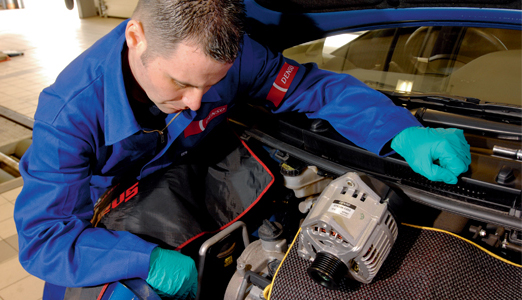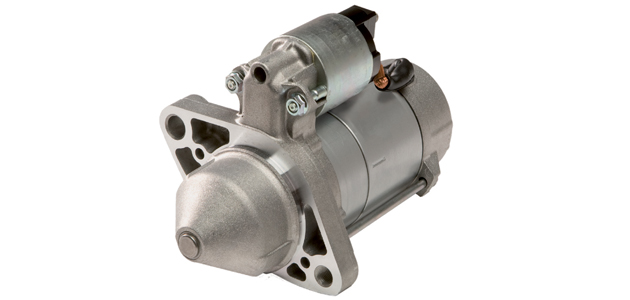
 DENSO, one of the world’s largest producers and innovators of OE starters and alternators, knows the importance of ensuring the correct fit. Small mistakes when fitting or replacing parts can bring the whole system to a standstill, making it essential that the correct procedures are carried out.
DENSO, one of the world’s largest producers and innovators of OE starters and alternators, knows the importance of ensuring the correct fit. Small mistakes when fitting or replacing parts can bring the whole system to a standstill, making it essential that the correct procedures are carried out.
Alternators
The correct application?
With three main types of alternators on the market – conventional (external fan), internal fan and Smartcharge – there are many factors that need to be considered when fitting or replacing an alternator. The first thing to consider is whether the alternator is the correct fit for the application in question. This may sound like a simple question but incompatibility is the cause of a large number of faults.
Check the ampage
Ensuring the correct ampage is key to preventing unnecessary damage to the unit, or, even worse, the entire system. When replacing the alternator, be sure to check the ampage of both the unit being fitted and the one being removed. With conventional units there is a little bit of leeway in regards to ampage, however internal fan and Smartcharge units need to be carefully checked to ensure a corresponding ampage. Incorrect ampage can result in damage to the charging unit or ECU.
Alignment and tension
Once the unit is mounted, be sure to check the alignment and tension of the belt. Misalignment of the belt can result in rubber being shaved off the belt, which in turn can be sucked into the alternator itself, causing it to overheat and in some cases can cause fires. Over-tensioning of the belt can also cause structural failure within the alternator by pulling the bearing across, causing them to wear away quickly and resulting in excessive noise and damage to the vehicle.
Starters
Kilowattage
Starters are, over time, becoming smaller units. This reduction in size makes it more essential than ever to ensure that you are using the right Kilowattage. In the case of diesel vehicles, fitting a starter motor with a low kilowatt output (i.e. smaller than the one removed) can cause the vehicle to turn over too slowly, resulting in non-starting. The incorrect Kilowattage can also cause problems with other components within the vehicle.
 Vital checks
Vital checks
Before fitting the starter motor it is vital to check that both the pinion and drive are correct. Whilst bolting-on, be sure to also check the alignment is correct.
Don’t drop!
Do not drop the starter motor! Always handle carefully as one drop can cause irreparable damage to the internal workings of the motor.









